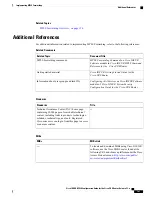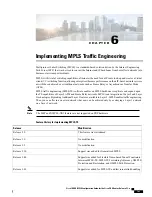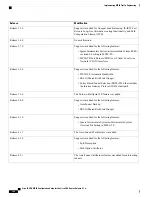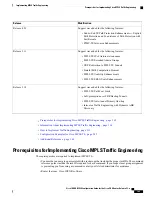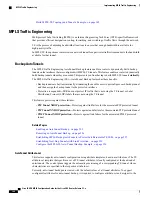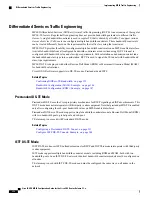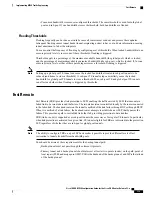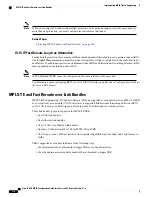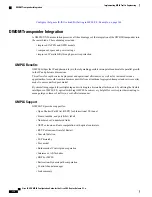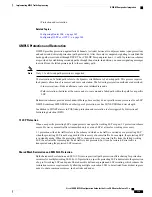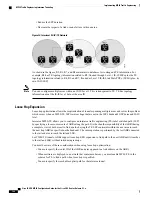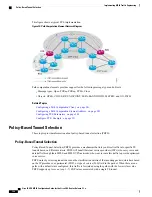
Differentiated Services Traffic Engineering
MPLS Differentiated Services (Diff-Serv) Aware Traffic Engineering (DS-TE) is an extension of the regular
MPLS-TE feature. Regular traffic engineering does not provide bandwidth guarantees to different traffic
classes. A single bandwidth constraint is used in regular TE that is shared by all traffic. To support various
classes of service (CoS), users can configure multiple bandwidth constraints. These bandwidth constraints
can be treated differently based on the requirement for the traffic class using that constraint.
MPLS DS-TE provides the ability to configure multiple bandwidth constraints on an MPLS-enabled interface.
Available bandwidths from all configured bandwidth constraints are advertised using IGP. TE tunnel is
configured with bandwidth value and class-type requirements. Path calculation and admission control take
the bandwidth and class-type into consideration. RSVP is used to signal the TE tunnel with bandwidth and
class-type requirements.
MPLS DS-TE is deployed with either Russian Doll Model (RDM) or Maximum Allocation Model (MAM)
for bandwidth calculations.
Cisco IOS XR software supports two DS-TE modes: Prestandard and IETF.
Related Topics
Confirming DiffServ-TE Bandwidth, on page 123
Bandwidth Configuration (MAM): Example, on page 146
Bandwidth Configuration (RDM): Example, on page 147
Prestandard DS-TE Mode
Prestandard DS-TE uses the Cisco proprietary mechanisms for RSVP signaling and IGP advertisements. This
DS-TE mode does not interoperate with third-party vendor equipment. Note that prestandard DS-TE is enabled
only after configuring the sub-pool bandwidth values on MPLS-enabled interfaces.
Prestandard Diff-Serve TE mode supports a single bandwidth constraint model a Russian Doll Model (RDM)
with two bandwidth pools: global-pool and sub-pool.
TE class map is not used with Prestandard DS-TE mode.
Related Topics
Configuring a Prestandard DS-TE Tunnel, on page 231
Configure IETF DS-TE Tunnels: Example, on page 344
IETF DS-TE Mode
IETF DS-TE mode uses IETF-defined extensions for RSVP and IGP. This mode interoperates with third-party
vendor equipment.
IETF mode supports multiple bandwidth constraint models, including RDM and MAM, both with two
bandwidth pools. In an IETF DS-TE network, identical bandwidth constraint models must be configured on
all nodes.
TE class map is used with IETF DS-TE mode and must be configured the same way on all nodes in the
network.
Cisco IOS XR MPLS Configuration Guide for the Cisco CRS Router, Release 5.1.x
172
Implementing MPLS Traffic Engineering
Differentiated Services Traffic Engineering




